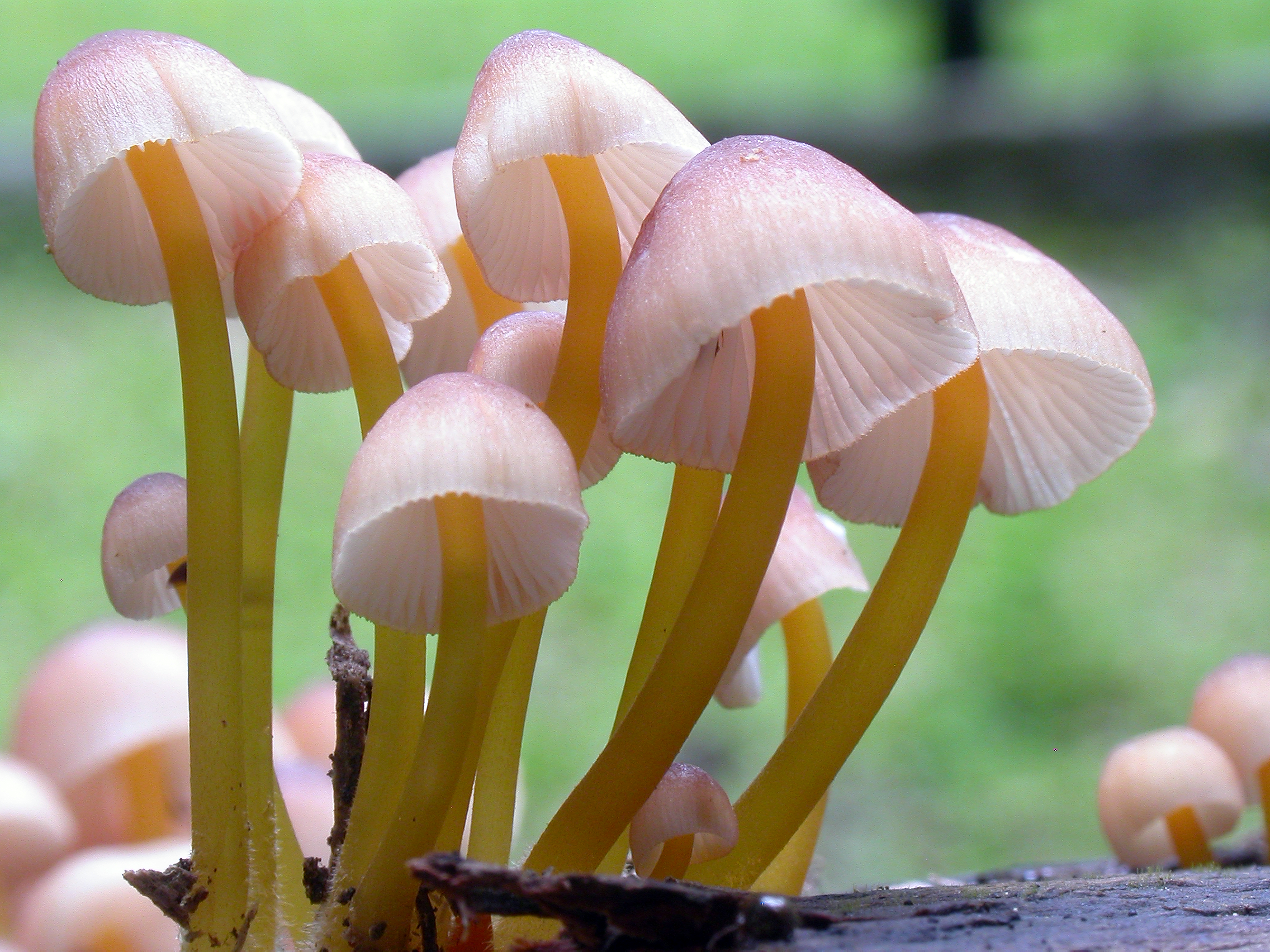Mycena renati
Mycena renati
- Innhold
- Description
- Ecology and distribution
Description
Cheilocystidia and hyphae of the pileipellis.
Cap 10-32 mm across, conical, parabolical to convex, pruinose, glabrescent, shallowly sulcate, translucent-striate, at first dark reddish brown, becoming paler reddish brown to pinkish brown, darker at the centre. Gills 16-20 reaching the stem, adnate, decurrent with a short tooth, becoming dorsally intervenose with age, dingy white to creamy pink, the edge concolorous or reddish brown. Stem 15-65 x 1-2.5 mm, cylindrical, equal, pruinose, glabrescent, bright yellow, turning brown from the base with age, the base covered with white fibrils. Odour indistinctive to weakly nitrous. Basidia 25-31 x 7-10 µm, clavate, 4-spored, with sterigmata up to 8 µm long. Spores 8-10.2 x 4.9-6 µm, Q = 1.4-1.8, Qav ˜ 1.6, fairly broadly pip-shaped, amyloid. Cheilocystidia 34-63 x 8-14 µm, forming a sterile band, fusiform, rarely lageniform or clavate. Pleurocystidia similar, if present. Lamellar trama dextrinoid. Hyphae of the pileipellis 2.5-12 µm wide, smooth or covered with coarse, rounded, mostly inflated excrescences 8-22.5 x 5.5-13.5 µm. Hyphae of the cortical layer of the stem 2.5-3.5 µm wide, smooth or covered with scattered rounded warts, the terminal cells coarsely diverticulate. Clamps present in all tissues.
Ecology and distribution
In small groups or fasciculate on wood and fallen branches of deciduous trees, e. g. Alnus, Corylus, Fagus. Summer to autumn. Disttributed, but not very common, in South-Norway.

